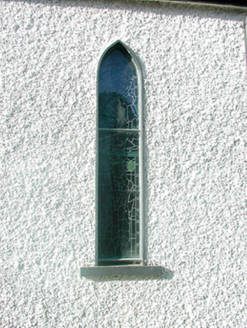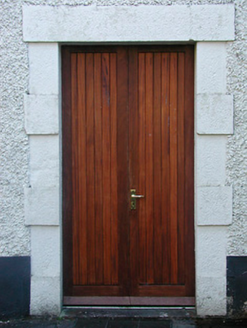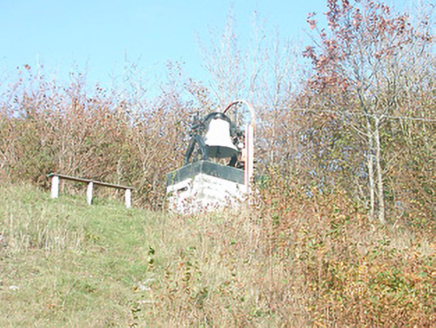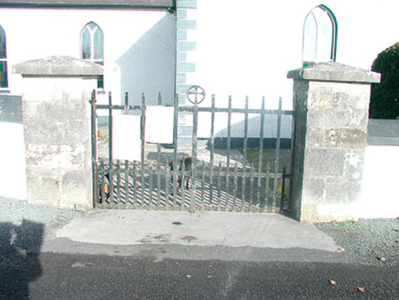Survey Data
Reg No
15403823
Rating
Regional
Categories of Special Interest
Architectural, Artistic, Social
Original Use
Church/chapel
In Use As
Church/chapel
Date
1800 - 1850
Coordinates
239843, 232993
Date Recorded
04/11/2004
Date Updated
--/--/--
Description
Freestanding Roman Catholic chapel on T-shaped-plan, built c.1810 and rebuilt c.1844 (plaque), comprising a two-bay nave with single-bay transepts to the north and south and later single-storey flat-roofed sacristy to the east. Pitched slate roofs with cast-iron rainwater goods and with carved stone cross and Celtic cross finials to gable ends. Roughcast rendered walls over smooth rendered plinth with raised cut stone quoins to the corners. Pointed-arch window openings having rendered reveals, cut stone sills and with timber and uPVC Y-tracery windows, all with stained glass. Square-headed door openings to the west gable end of nave and to the west face of transept to the north having cut limestone block-and-start surrounds and replacement timber doors. Plain square-headed doorcase to the west face of transept to the south with replacement timber sheeted door. Cast-iron bell supported on a concrete plinth located on a rise to the northwest of church. Chapel/church set back from road in own grounds and bounded on road frontage by a roughcast rendered boundary wall with cut stone coping over. Gateway to the south comprising a pair of dressed limestone gate piers on square-plan supporting wrought-iron double gates.
Appraisal
A modest-scale church of simple form and appearance, which retains much of its original form and character. The simple massing and plain detailing is typical of churches of this period when the Roman Catholic Church was restricted by the Penal Laws (pre-1829) and a lack of resources to construct more substantial and decorative structures. The carved stone doorcases and the simple by well-composed gateway are of artistic merit. The absence of an attached belfry is a common feature of early nineteenth-century Roman Catholic chapels built in Ireland before and in the first decades following Catholic Emancipation (1829). This church is an integral element of the built heritage and the social history of the Rahugh area and is a welcome addition to its pleasant rural location.

















